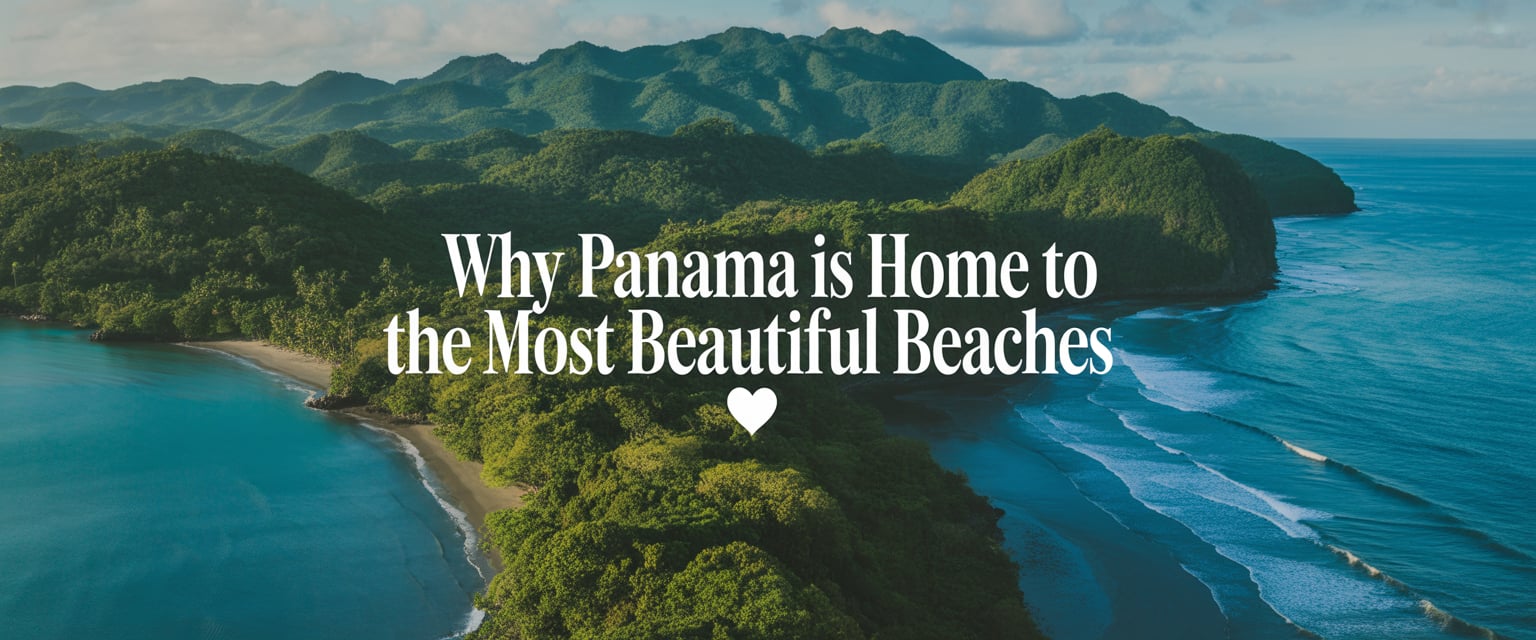When travelers dream of the perfect beach escape, few places rival Panama’s blend of untouched beauty and tropical charm. Stretching between the Pacific Ocean and the Caribbean Sea, this small yet stunning country offers a rare dual-coast experience where turquoise waters, golden sands, and vibrant marine life meet cultural richness and tranquility.
Why Panama Is Home to the Most Beautiful Beaches becomes clear the moment you set foot on its serene shores — each beach tells a different story of nature’s perfection, from the coral reefs of San Blas to the surf waves of Santa Catalina.
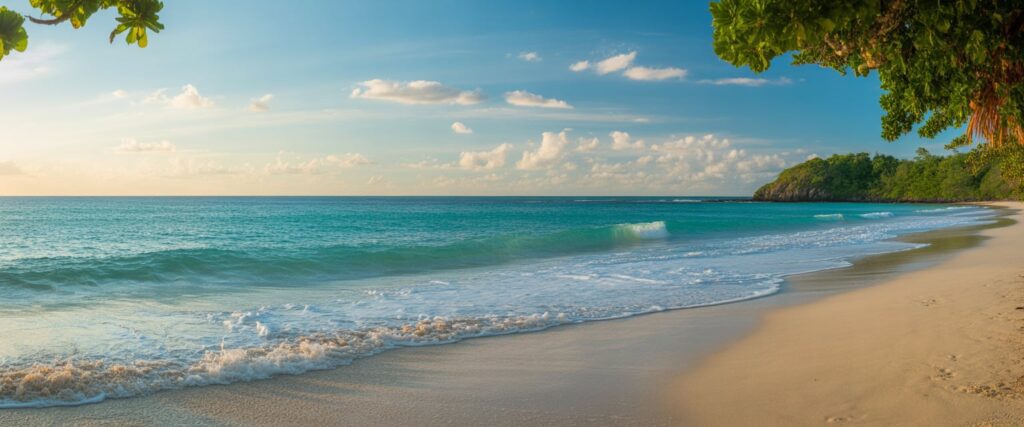
This guide explores what makes Panama a coastal paradise that continues to captivate adventurers, honeymooners, and beach lovers from around the world.
Table of Contents
Why Panama Is Home to the Most Beautiful Beaches?
Panama sits between two oceans, giving it a coastline filled with beaches that feel untouched yet easy to reach. From calm Caribbean coves to powerful Pacific surf spots, its shores offer a range of experiences in one small country. Panama is home to some of the most beautiful beaches because of its rare mix of natural variety, clear waters, and preserved environments.
Places like Bocas del Toro and San Blas attract travelers who want both beauty and authenticity. These islands stay protected by local communities, keeping their white sand and coral reefs in near-pristine condition. On the Pacific side, Isla Coiba and Santa Catalina draw divers and surfers who prefer wild, scenic coastlines over crowded resorts.
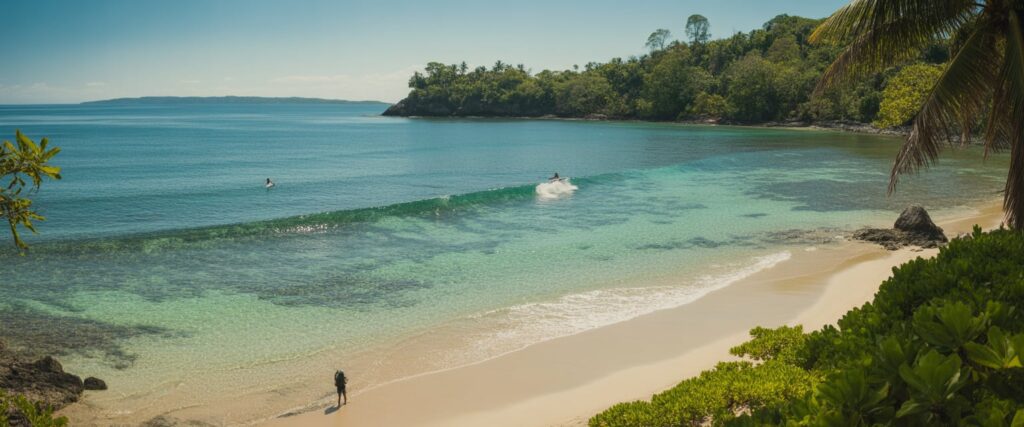
As the article explores what makes Panama’s beaches unique, it also looks at how they compare to Florida’s Gulf Coast and why people seeking a relaxed, tropical lifestyle often choose Panama. Each section highlights how accessibility, natural beauty, and local culture combine to make Panama a standout beach destination.
What Makes Panama’s Beaches Unique?
Panama’s beaches stand out for their natural variety, clear waters, and reliable tropical weather. The country’s position between two oceans gives it a rare mix of coastal environments that attract swimmers, surfers, and divers alike.
Geographic Diversity and Dual Coastlines
Panama connects Central and South America and borders both the Pacific Ocean and the Caribbean Sea. This dual-coastline geography gives travelers access to two very different beach experiences within a few hours’ drive.
On the Pacific side, large waves and long stretches of sand draw surfers to places like Santa Catalina and Playa Venao. The Caribbean coast, including the San Blas Islands, offers calm turquoise waters and coral reefs ideal for snorkeling.
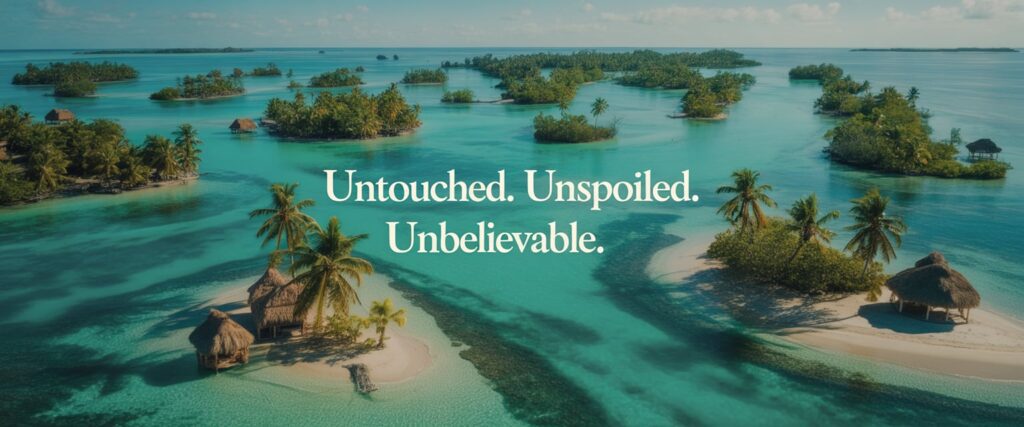
Panama City sits near the Pacific, making it easy to reach nearby beaches for day trips. In contrast, Panama City Beach in Florida—though not in Panama—often draws comparisons because of its white sands and resort atmosphere. Yet Panama’s own beaches remain less crowded and more natural.
This geographic range supports both tourism and local fishing communities. It also allows visitors to experience distinct ecosystems, from mangrove forests to volcanic rock shores, without leaving the country.
Crystal-Clear Waters and White Sands
Many of Panama’s beaches feature clear water and fine white sand, especially on the Caribbean side. The Bocas del Toro archipelago and the Pearl Islands are known for their calm bays and shallow reefs where visitors can see starfish, rays, and tropical fish.
In places like Isla Contadora, visibility often extends several meters below the surface, making it ideal for diving and snorkeling. On the Pacific side, beaches such as Red Frog Beach mix soft sand with lush jungle, creating a balance between relaxation and exploration.
| Coast | Notable Beaches | Activities |
|---|---|---|
| Caribbean | San Blas, Bocas del Toro | Snorkeling, swimming |
| Pacific | Santa Catalina, Playa Venao | Surfing, diving |
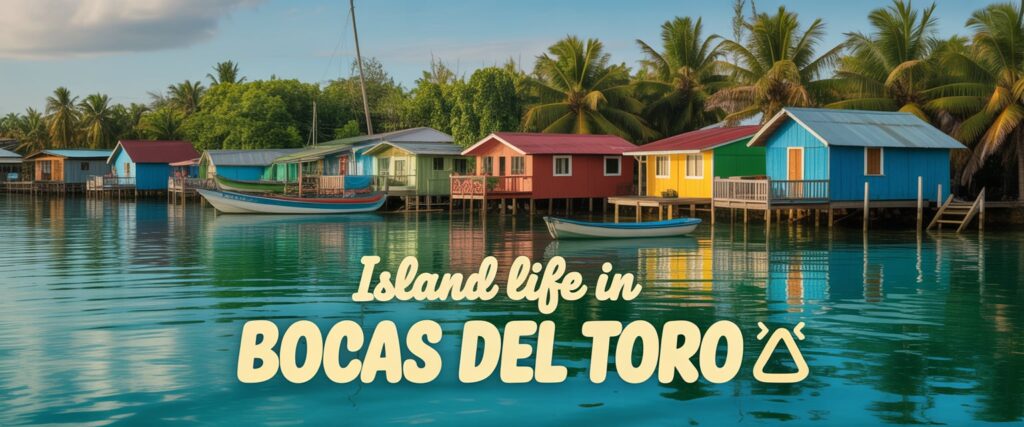
These beaches maintain their clarity thanks to limited industrial development and strong conservation efforts around marine parks and coastal habitats.
Year-Round Sunshine and Pleasant Climate
Panama’s tropical climate keeps its beaches warm and inviting throughout the year. Average temperatures stay near 80°F (27°C), and even during the rainy season, showers usually pass quickly.
The dry season, from December to April, is considered the best time for outdoor activities. During this period, travelers enjoy long sunny days, calm seas, and easy travel between coastal regions. According to Travel Noire, the dry season offers the clearest skies and most comfortable humidity levels.
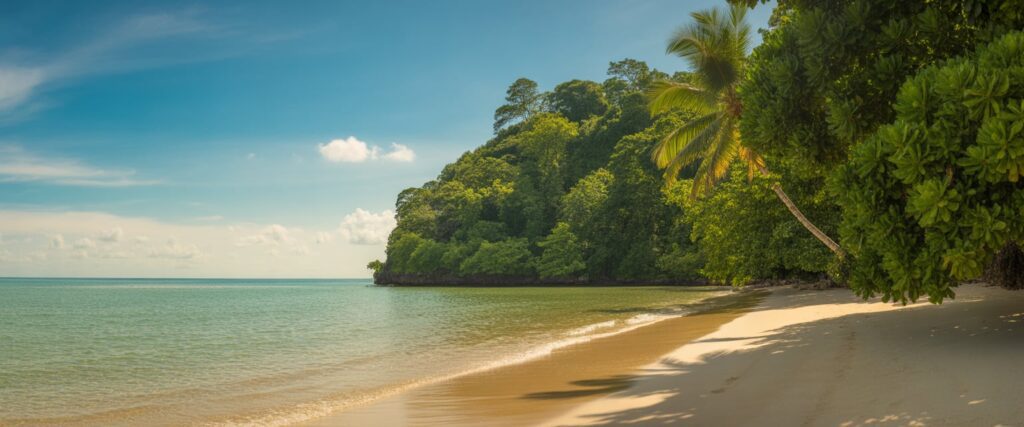
Humidity and rainfall increase from May to November, but the landscape becomes greener and more vibrant. This balance of sunshine and rain supports the lush vegetation that frames many of Panama’s beaches, giving each shoreline a vivid, natural backdrop.
Iconic Beach Destinations in Panama
Panama’s coastline blends Caribbean calm with Pacific energy. Its islands and beaches offer clear water for snorkeling, surf breaks for adventure seekers, and quiet shores for those wanting privacy close to nature.
San Blas Islands: Untouched Caribbean Paradise
The San Blas Islands, also called the Guna Yala archipelago, stretch along Panama’s northeast coast. Over 350 small islands form a region managed by the Guna people, who protect both their culture and the environment.
Visitors often stay in eco-lodges or simple beach huts built from palm and bamboo. The islands’ clear turquoise water makes them ideal for swimming, kayaking, and snorkeling among coral reefs filled with tropical fish.
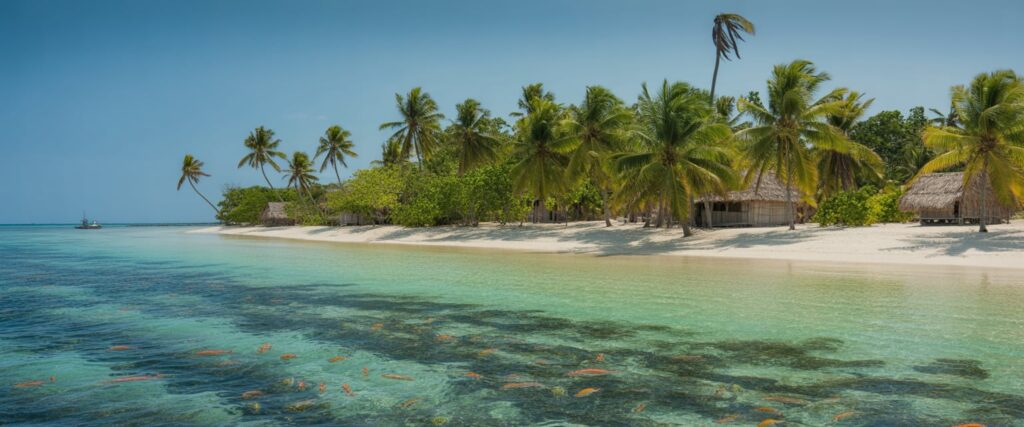
Electricity and Wi-Fi are limited, which helps preserve the islands’ natural setting. Travelers value the quiet atmosphere and the chance to experience a traditional way of life while surrounded by white sand and coconut palms.
Bocas del Toro: Vibrant Island Life
Bocas del Toro lies near Panama’s border with Costa Rica on the Caribbean side. The main island, Isla Colón, hosts the lively town of Bocas Town, known for colorful wooden houses and easy access to nearby beaches.
Popular spots include Red Frog Beach and Starfish Beach, where calm water and marine life attract swimmers and snorkelers. The area also supports coral reef conservation projects that visitors can learn about through local tours.
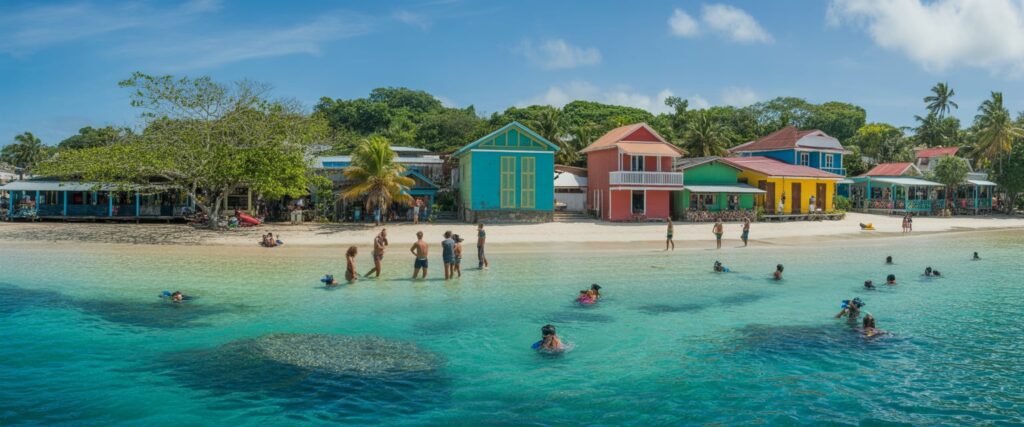
Nightlife, restaurants, and surf schools make Bocas del Toro appealing to younger travelers. Despite its popularity, the islands maintain a relaxed pace, combining coastal charm with modern amenities.
Pearl Islands and Isla Contadora: Luxury and Seclusion
The Pearl Islands sit in the Gulf of Panama, about 30 miles from Panama City. This group of over 200 islands is known for soft white sand and calm Pacific water. Isla Contadora is the most developed, offering boutique hotels, small resorts, and private villas.
Visitors can reach the islands by short flight or ferry. Activities include whale watching from July to October, snorkeling, and boating between uninhabited islands.
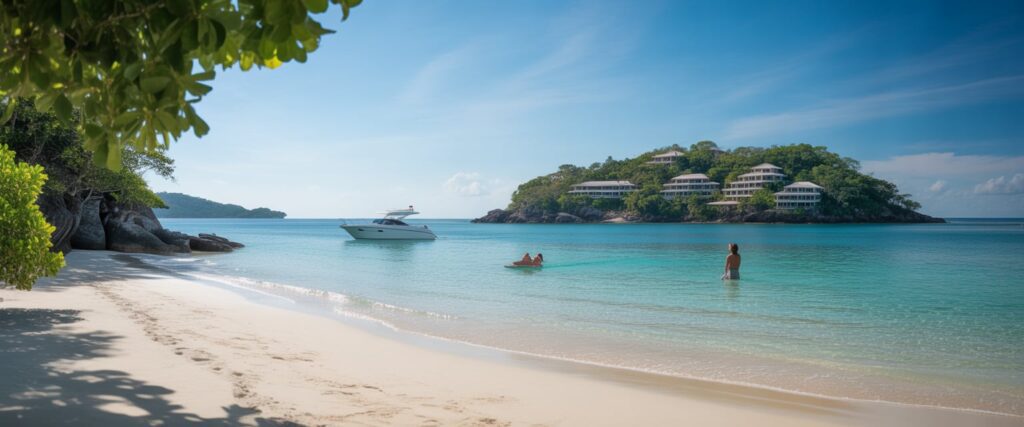
The Pearl Islands once served as a filming location for several international television shows, which helped increase their recognition. Despite this, many beaches remain quiet, offering privacy and comfort within easy reach of the capital.
Isla Coiba and Santa Catalina: Adventure and Biodiversity
Located off Panama’s Pacific coast, Isla Coiba is part of Coiba National Park, a UNESCO World Heritage Site. The island’s protected waters host coral reefs, sea turtles, and large fish species.
Nearby Santa Catalina, a small beach town on the mainland, serves as the main access point. It attracts surfers to its consistent waves and divers heading to Coiba for marine exploration.
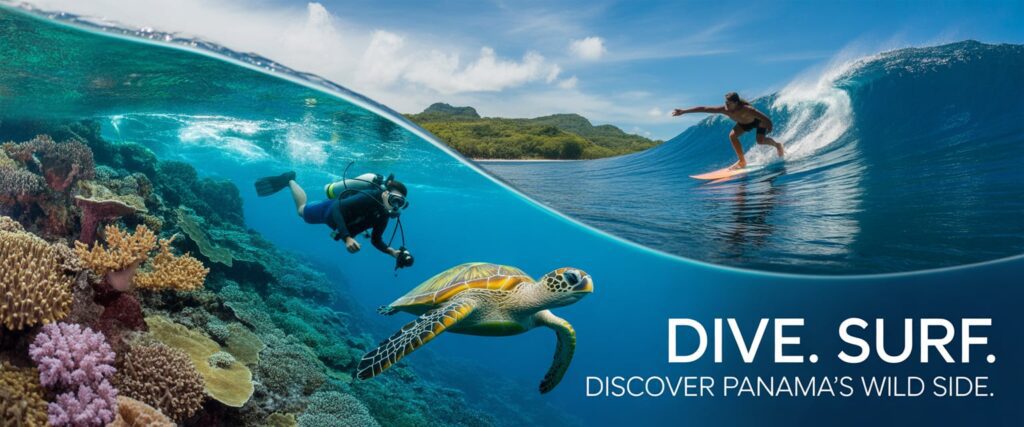
The park’s isolation once preserved it as a former penal colony, which helped protect its ecosystems. Today, strict visitor limits keep the area pristine, making it one of Panama’s top destinations for nature and adventure travel.
Comparing Panama’s Beaches to Florida’s Gulf Coast
Panama’s beaches and Florida’s Gulf Coast both draw travelers with warm waters, soft sand, and easygoing atmospheres. Yet they differ in culture, setting, and development, giving visitors distinct experiences shaped by geography and lifestyle.
Emerald Coast Highlights: Destin and 30A
Florida’s Emerald Coast, stretching from Destin to 30A, is known for its fine white quartz sand and emerald-green water. The beaches here are calm and shallow, ideal for families and paddleboarders. Towns like Seaside and Rosemary Beach along 30A feature pastel cottages, bike paths, and boutique shops.
Destin, once a small fishing village, now offers deep-sea fishing charters and waterfront dining near the Destin Harbor Boardwalk. Visitors enjoy Henderson Beach State Park, which protects dunes and provides public beach access with restrooms and picnic areas.
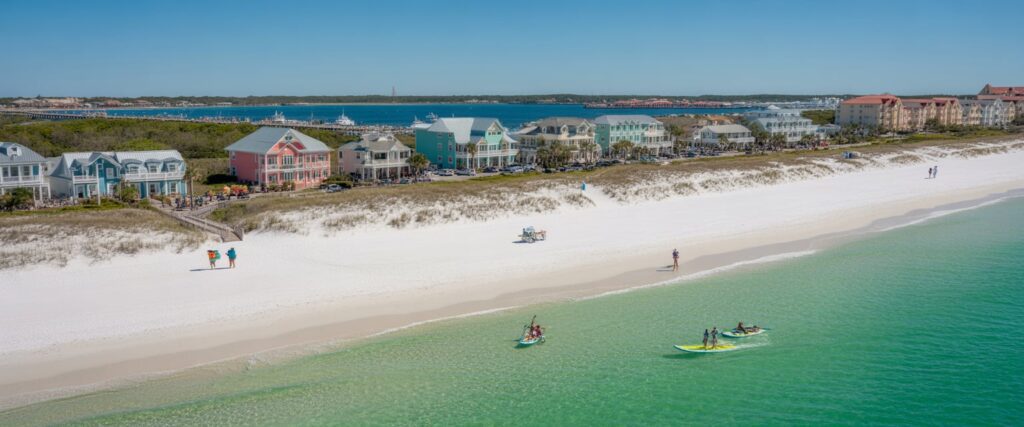
The area’s mix of upscale resorts and small communities creates a blend of comfort and charm. While busy in summer, the Emerald Coast maintains a relaxed pace supported by clear waters and family-friendly amenities that make it one of Florida’s most popular coastal regions.
Panama City Beach: A Popular Florida Gem
Panama City Beach sits about an hour east of Destin and features 27 miles of coastline along the Gulf of Mexico. The sand is bright white, and the water stays warm most of the year. It’s known for its wide beaches, making it easy to find space even during peak seasons.
The city offers a range of attractions beyond the beach, including St. Andrews State Park, where visitors can kayak, snorkel, or take a shuttle to Shell Island. Restaurants and entertainment venues line Pier Park, a large outdoor shopping and dining area.
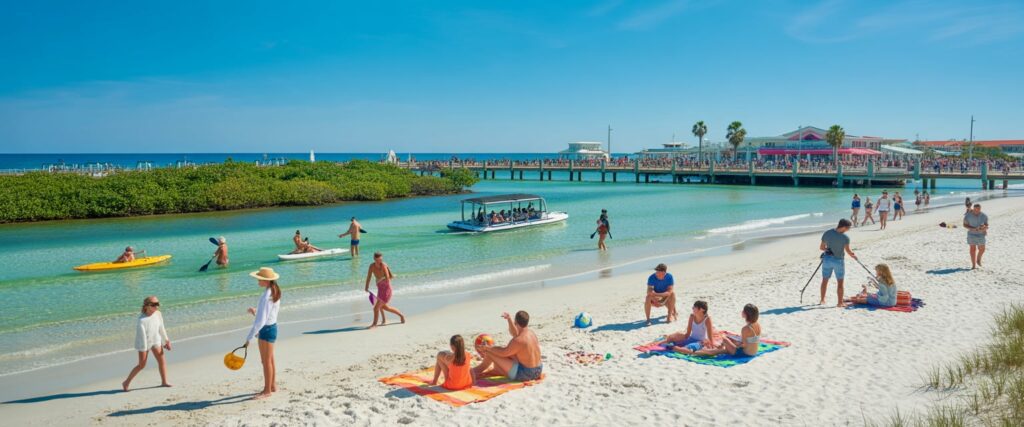
Panama City Beach attracts both families and college students, depending on the season. Affordable accommodations and direct road access from major highways make it one of the most accessible beach destinations in the Southeast.
Accessibility and Community Vibes
Florida’s Gulf Coast beaches, especially in Destin and Panama City Beach, are easily reached by car from Atlanta, Birmingham, and other southern cities. Regional airports in Pensacola and Panama City add convenience for travelers flying in.
Communities along 30A emphasize walkability and local design codes that preserve small-town character. In contrast, Panama City Beach and Destin offer larger resorts and more nightlife.
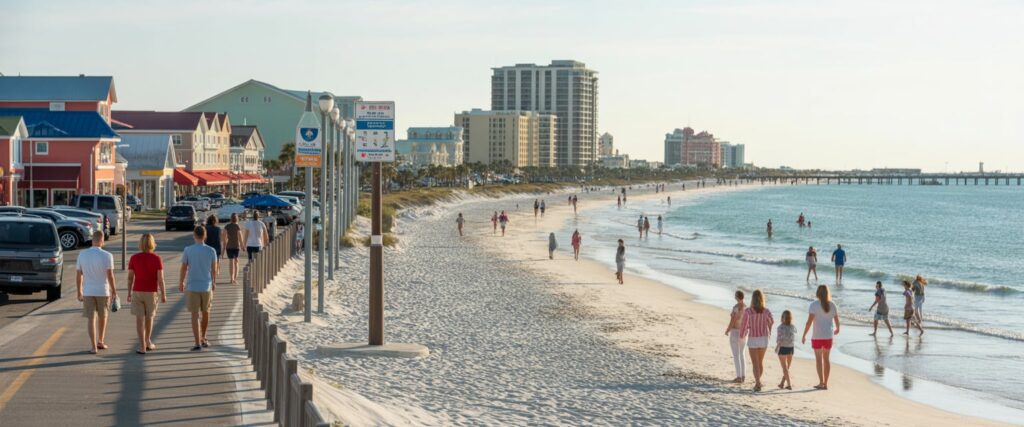
Visitors seeking quiet neighborhoods often prefer 30A, while those wanting more activity choose Panama City Beach. Each area provides reliable infrastructure, public parking, and maintained beach access points, ensuring travelers can enjoy the coast without difficulty.
Lifestyle, Accessibility, and Who Loves Panama’s Beaches
Panama’s beaches attract people who value comfort, connection, and convenience. The country offers a relaxed coastal lifestyle, easy access to both city and sea, and affordable living that appeals to retirees, locals, and expats alike.
Retirees and Community Living
Many retirees choose Panama for its low cost of living, mild climate, and friendly culture. Programs like the Pensionado visa make it easier for foreign retirees to settle in the country. Towns such as San Carlos and Coronado provide quiet communities near the water with modern amenities, local markets, and healthcare access.
In places like San Carlos, Panama, residents enjoy a small-town feel while staying close to Panama City, just an hour away. This balance of peace and practicality creates a strong sense of community.
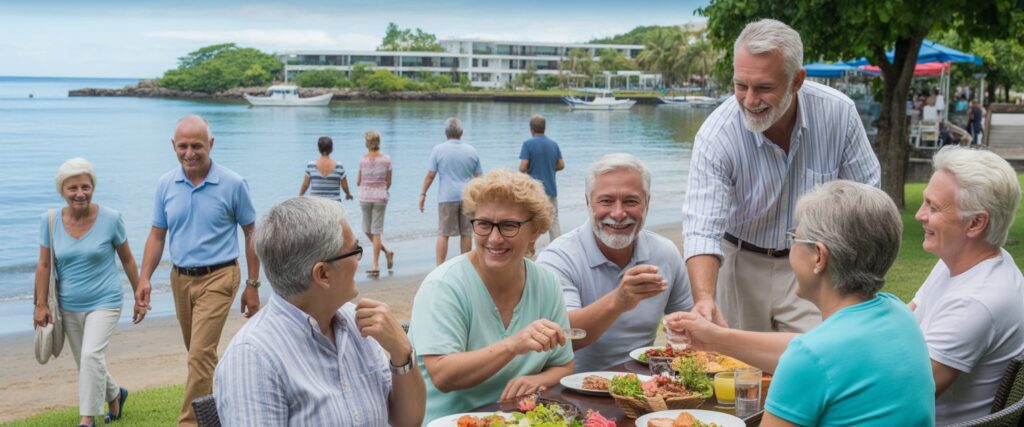
Social life often centers on neighborhood gatherings, beach walks, and shared meals. Retirees appreciate the slower pace and genuine interactions with locals. Many find that learning basic Spanish helps them integrate more easily.
Recreational Activities and Beach Access
Panama’s coastline supports a wide range of outdoor activities. Locals and visitors surf, swim, kayak, and fish along both the Pacific and Caribbean shores. Panama City Beach areas, such as Playa Veracruz, offer quick escapes for city residents who want to relax after work.
Beach access is generally open and easy. Roads connect most coastal towns to major highways, and public transportation makes short trips affordable. Those who prefer quieter spots can explore areas like Bocas del Toro or the Azuero Peninsula, where beaches remain less crowded.
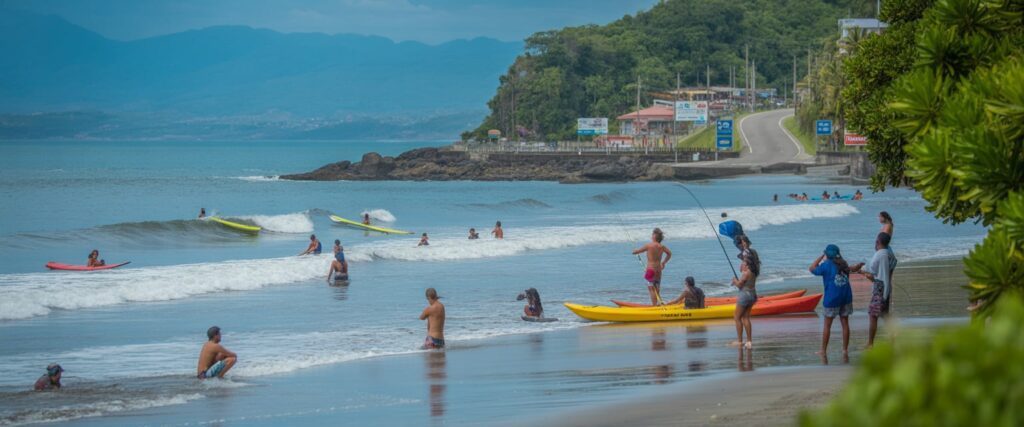
Nature lovers also enjoy hiking, birdwatching, and exploring nearby rainforests. The country’s geography allows people to move from beach to mountain within a few hours, adding variety to daily life.
Affordable Coastal Living
The cost of living near Panama’s beaches remains lower than in many North American coastal regions. According to Kiplinger, retirees can live comfortably on under $2,000 per month.
Rent for a two-bedroom home near the beach can range from $700 to $900, depending on location. Fresh produce, local seafood, and public healthcare keep monthly expenses manageable.
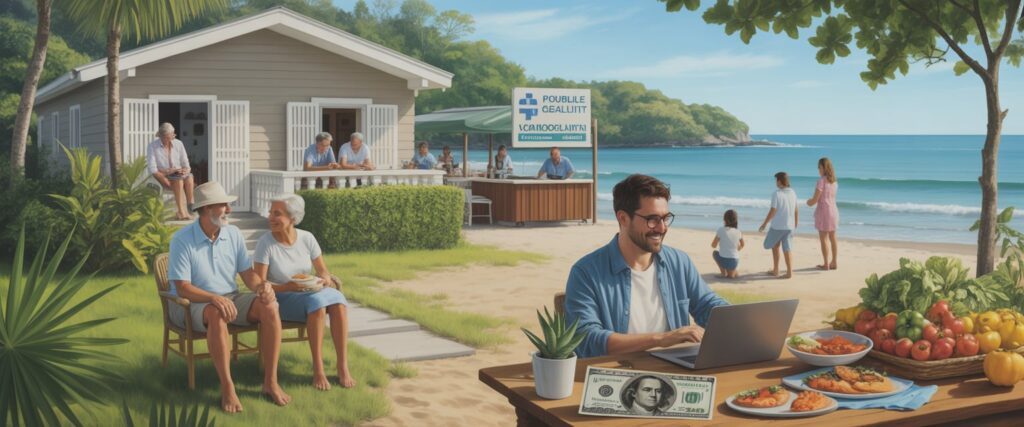
Panama’s stable economy and use of the U.S. dollar also simplify budgeting. These factors make coastal living accessible not only to retirees but also to digital nomads and families seeking a relaxed, affordable lifestyle by the sea.
Conclusion
Panama’s charm lies in its diversity a seamless blend of adventure, relaxation, and authenticity across its Caribbean and Pacific shores. Whether you’re snorkeling in Bocas del Toro, diving in Coiba, or simply unwinding on the quiet sands of the Pearl Islands, each experience reaffirms Why Panama Is Home to the Most Beautiful Beaches.
The country’s commitment to preserving its natural landscapes, paired with warm hospitality and year-round sunshine, makes it more than just a destination — it’s a timeless tropical haven waiting to be explored.
Frequently Asked Questions
What is the #1 most beautiful beach in the world?
The title of the world’s most beautiful beach often goes to Grace Bay Beach in Turks and Caicos. Its powdery white sand, calm turquoise waters, and pristine natural surroundings make it a dream destination for travelers. The water clarity and untouched beauty of the area create a postcard-perfect paradise that feels almost unreal.
What makes Panama beautiful?
Panama’s beauty lies in its diverse landscapes and cultural richness. The country is a rare gem where you can watch the sunrise over the Caribbean and the sunset over the Pacific — all in a single day. From lush rainforests and volcanic highlands to modern skylines and secluded islands, Panama blends nature, adventure, and culture in one stunning destination.
What is the prettiest beach in Panama?
The prettiest beach in Panama is often said to be Playa Blanca on the Pacific coast. Its name, meaning “White Beach,” perfectly describes its dazzling white sand and crystal-clear waters. With calm waves, palm trees, and luxurious resorts nearby, Playa Blanca offers both relaxation and breathtaking beauty — making it one of Panama’s top beach escapes.
What is Panama most famous for?
Panama is most famous for the Panama Canal, one of the greatest engineering marvels in the world that connects the Atlantic and Pacific Oceans. Beyond that, the country is also known for its biodiversity, tropical islands, rich coffee, and vibrant culture that bridges North and South America both geographically and culturally.
Are there beautiful beaches in Panama?
Absolutely! Panama is home to some of the most beautiful beaches in Central America, spread across both the Caribbean and Pacific coasts. Visitors can explore the crystal-clear waters of San Blas Islands, surf at Santa Catalina, or relax on the pristine sands of Bocas del Toro. Each beach offers its own charm, from adventure to total tranquility.
Which country is known for beautiful beaches?
Countries like the Maldives, Seychelles, and the Philippines are world-famous for their stunning beaches, each offering turquoise waters and white sand perfection. However, Panama is quickly gaining recognition for its untouched and less crowded beaches — making it a rising star among the world’s top beach destinations.
